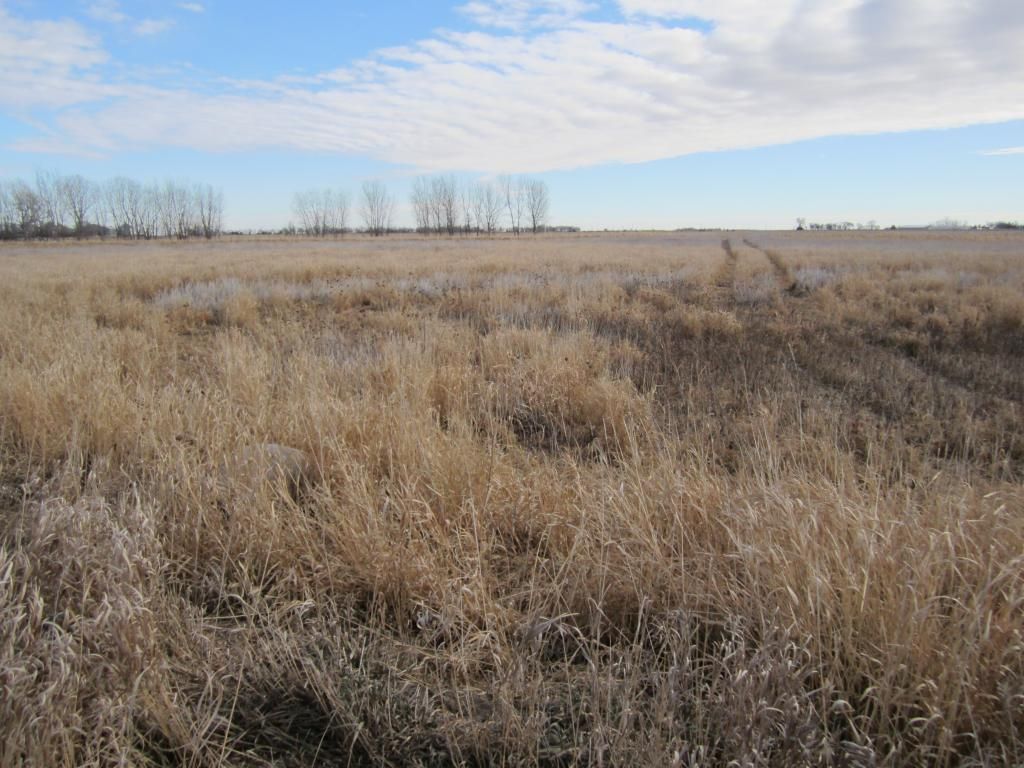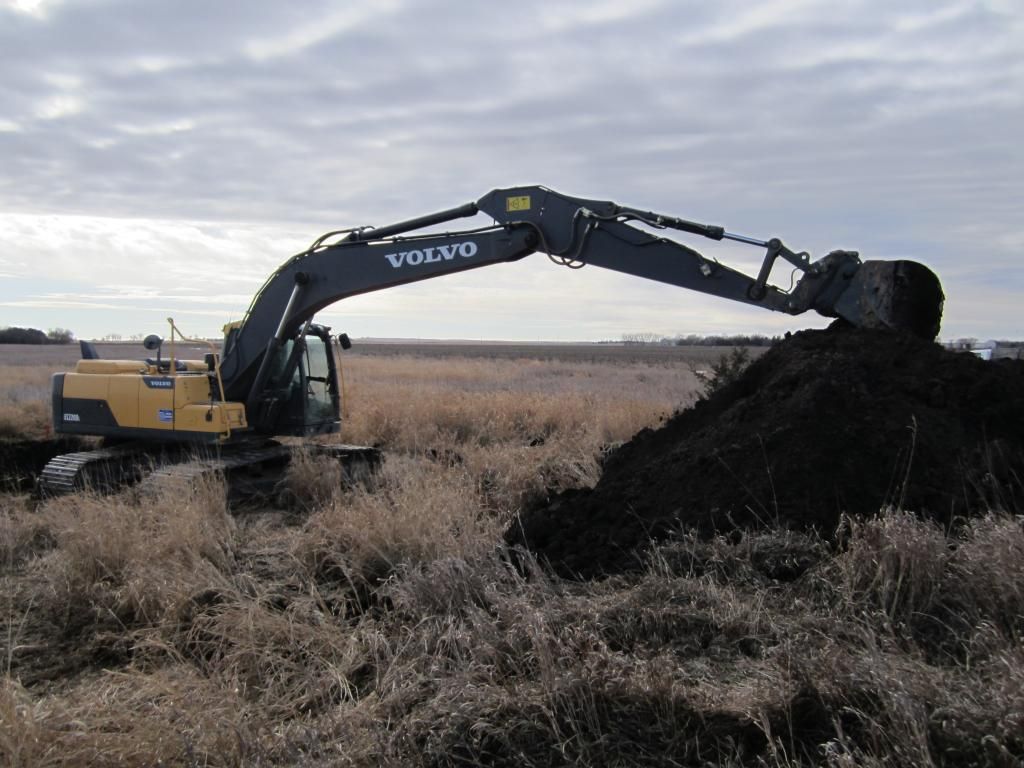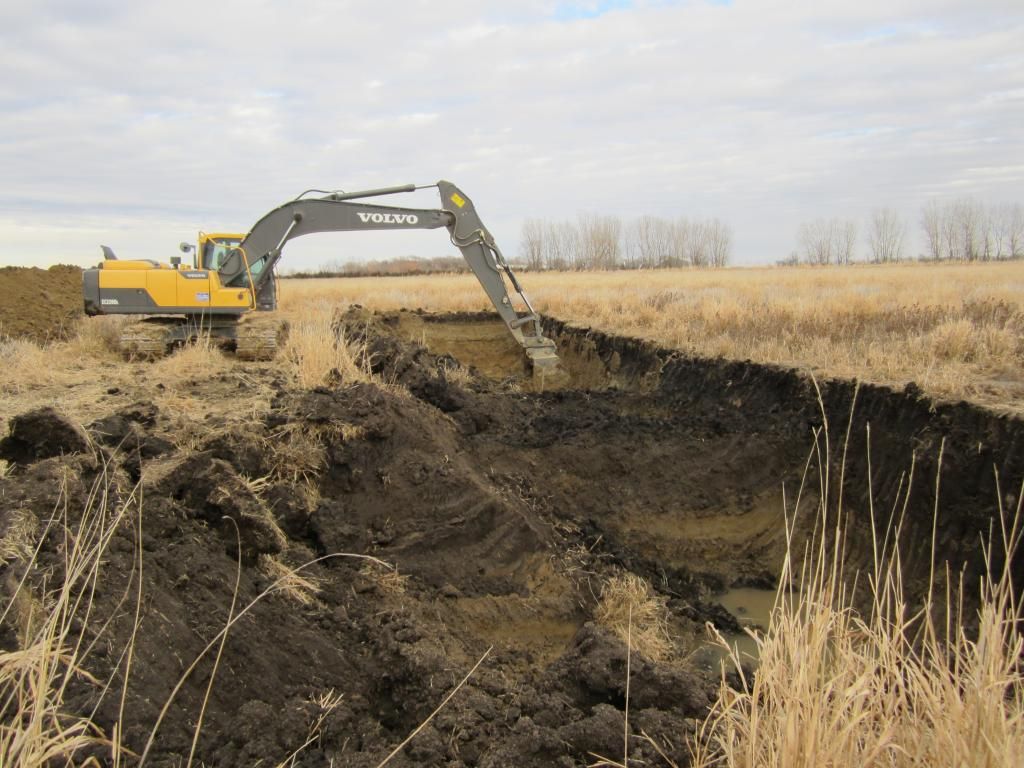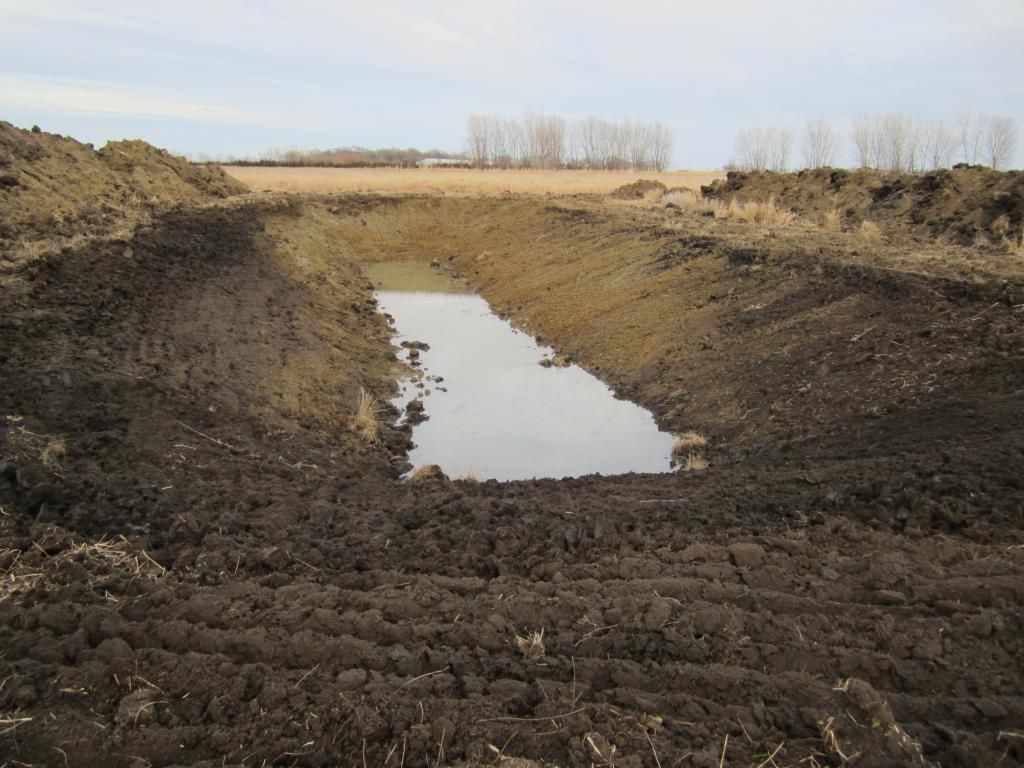You are using an out of date browser. It may not display this or other websites correctly.
You should upgrade or use an alternative browser.
You should upgrade or use an alternative browser.
2015 Habitat projects
- Thread starter SDJIM
- Start date
SDJIM
New member
I'm going to have someone kill it then overplant with round up ready beans.
The beans will get sprayed several times thru the growing season killing any new brome. Then plant with a good mixture of grass and likely a pollinator area also. If everything works the only real cost to me will be the 3 grand the dugout clean up is going to run me.
Only time will tell--if it works there will be 40 more acres of quality wildlife habitat added to the landscape around my neck of the woods. :thumbsup:
The beans will get sprayed several times thru the growing season killing any new brome. Then plant with a good mixture of grass and likely a pollinator area also. If everything works the only real cost to me will be the 3 grand the dugout clean up is going to run me.
Only time will tell--if it works there will be 40 more acres of quality wildlife habitat added to the landscape around my neck of the woods. :thumbsup:
quail hound
Moderator
Looks good Jim! Those backyard roosters must really love you, at least when you aren't carrying a shotgun.:thumbsup: You could've had a free excavator operator if I were there already.
Prairie Drifter
Well-known member
Are you going to mow or burn before the first chemical app? It will sure make your chemical go further. On the seeding, try not to go strictly with the NRCS's "livestock" seeding rate. Check with the wildlife dept or PF bios for an adjusted rate that will be more conducive as nesting and roosting habitat for your area. The bean idea is great! Those additional apps prior to seeding will help ensure success, kudos!
UGUIDE
Active member
Jim, no CRP eligibility? Probably not the right cropping history right. Some good programs out there right now like CP 38 safe or cp-42 pollinator.
If it were me I would leave out 5-10% of the acres in dispersed 2-3 acre food plots. 3 benefits there in this order: winter cover and adjacent food, close proximity food for nesting hens which maximizes why you do grass in the first place, and of course last but not least is the hunting performance by boosting the attract and hold value from hunting pressure.
If it were me I would leave out 5-10% of the acres in dispersed 2-3 acre food plots. 3 benefits there in this order: winter cover and adjacent food, close proximity food for nesting hens which maximizes why you do grass in the first place, and of course last but not least is the hunting performance by boosting the attract and hold value from hunting pressure.
1pheas4
Moderator
Then plant with a good mixture of grass and likely a pollinator area also. :thumbsup:
Jim you're on a role. 40 acres with some (brood rearing) pollinators will give a nice boost to you bird numbers--a good water source can't hurt anything either
Good luck with everything:cheers:
Nick
SDJIM
New member
Jim, no CRP eligibility? Probably not the right cropping history right. Some good programs out there right now like CP 38 safe or cp-42 pollinator.
If it were me I would leave out 5-10% of the acres in dispersed 2-3 acre food plots. 3 benefits there in this order: winter cover and adjacent food, close proximity food for nesting hens which maximizes why you do grass in the first place, and of course last but not least is the hunting performance by boosting the attract and hold value from hunting pressure.
Your right on--no crop history at all so no CRP. What I'm going to do is go thru the SDGF&P and use their program that will copay up to 100% the cost of the seed and planting, there is no annual rent type payment as in CRP.
I've done food plots and have some trees on it that were at my expense--but I was just never happy with the results so guess its time to do it up right. I like the idea of a couple of food plots and will plan them in.
I'm going to take a lot of pictures and keep track of how all this works--maybe I'll learn something
Last edited:
reddog
Well-known member
Jim,
Excellent that you are giving your restoration the best chance by taking an extra growing season with the soybeans! That will assure your success, IMO.
Brome can be a tough opponent. Timing is the key.
Like PD said, if you can get the residue off, your initial application of herbicide will go further.
I am assuming you are going to no till drill the beans into the brome field or are you going to disc it up first?
Im going to frost seed my forbs this weekend. $2500 of seeds into 3.5 acres..OUCH..
Excellent that you are giving your restoration the best chance by taking an extra growing season with the soybeans! That will assure your success, IMO.
Brome can be a tough opponent. Timing is the key.
Like PD said, if you can get the residue off, your initial application of herbicide will go further.
I am assuming you are going to no till drill the beans into the brome field or are you going to disc it up first?
Im going to frost seed my forbs this weekend. $2500 of seeds into 3.5 acres..OUCH..
reddog
Well-known member
Rent free should be a no brainer, especialy if theyre already in the hood.
Brome is a sod forming grass, and doesnt have deep roots, but it does drop alot of seeds if left uncut. A shallow discing, would probably eliminate the initial herbicide application. but any time you disturb the surface, you introduce new weed seeds.
Im sure you already know this, but I think there are some following this also.
Fire is a good way to control brome also. It wont eliminate it, but it will set it back/damage it, so it wont build a seed head for the year, if you damage it at the right time.
Prairie Moon nursery in Winona Mn has had some success converting Smooth Brome fields into forb brood stock, without the use of any herbicide. Just timeley applications of fire and some hand work...
Im not saying it is for everyone,
https://www.facebook.com/pages/Prai...82027820267/10154285314965268/?type=1&theater
Brome is a sod forming grass, and doesnt have deep roots, but it does drop alot of seeds if left uncut. A shallow discing, would probably eliminate the initial herbicide application. but any time you disturb the surface, you introduce new weed seeds.
Im sure you already know this, but I think there are some following this also.
Fire is a good way to control brome also. It wont eliminate it, but it will set it back/damage it, so it wont build a seed head for the year, if you damage it at the right time.
Prairie Moon nursery in Winona Mn has had some success converting Smooth Brome fields into forb brood stock, without the use of any herbicide. Just timeley applications of fire and some hand work...
Im not saying it is for everyone,
https://www.facebook.com/pages/Prai...82027820267/10154285314965268/?type=1&theater
SDJIM
New member
Fire is a tough one for me as I am directly in the flight path of the local airport--it's just 1 mile away to the north and it's also adjacent to the MAJOR highway to the south (lots and lots of commercial truck traffic)---burning grass puts up lots of smoke problems for both things above. So I am not likely to have fire as an option--darn 
One way or another it's going to happen. :cheers:
One way or another it's going to happen. :cheers:
Last edited:
quail hound
Moderator
Looking good Jim!:10sign: Excuse me if this is a dumb question but is that standing water the water table in your area?
reddog
Well-known member
Jim,
Was there any frost under the brome cover?
What is the orientation of the pond? NS, or EW? I can just see 50 pheasants sitting under some thickets on top of the berm, out of the wind and in the sun..
Next time youre out driving around, go gather some cattail seed heads..
Regarding the water in the pond, Im no expert, but anytime you dig a hole in clay, water will fill it. The take ponds along I90 always amazed me that they would hold water, with no drainage area into them..
Was there any frost under the brome cover?
What is the orientation of the pond? NS, or EW? I can just see 50 pheasants sitting under some thickets on top of the berm, out of the wind and in the sun..
Next time youre out driving around, go gather some cattail seed heads..
Regarding the water in the pond, Im no expert, but anytime you dig a hole in clay, water will fill it. The take ponds along I90 always amazed me that they would hold water, with no drainage area into them..
quail hound
Moderator
I see, that could just be water seeping in from the surrounding, poorly drained soil and not necessarily the water table? We deal with something similar with storm water ponds that sit on hard pan and never drain, just evaporate.
SDJIM
New member
Lets see 
1. It's water that has seeped in--started to get it about 8 ft down, maybe it will fill it up.
2. It is slightly SW to NE
3. Made sure they didn't cover the new 3 ft Cedar tree on the SW corner--it's a start
4. If there was any frost it was not much.
It was the last place on the land to hold water as it still filled to about 3 ft in the spring.
Anyone with ideas on what to plant on the berms of dirt? My guess is that a bunch of thistle seed will blow in on the snow this winter.
Boy was the top 3 ft is really dark black rich looking soil--think I'll get some for my garden.
1. It's water that has seeped in--started to get it about 8 ft down, maybe it will fill it up.
2. It is slightly SW to NE
3. Made sure they didn't cover the new 3 ft Cedar tree on the SW corner--it's a start
4. If there was any frost it was not much.
It was the last place on the land to hold water as it still filled to about 3 ft in the spring.
Anyone with ideas on what to plant on the berms of dirt? My guess is that a bunch of thistle seed will blow in on the snow this winter.
Boy was the top 3 ft is really dark black rich looking soil--think I'll get some for my garden.
Last edited:
mnmthunting
Banned
Jim that looks nice, job well done. Looks like sepage, probably well above the water table. Thats a good thing, a little snow melt, couple April showers, the pond will likely seal up and hold water pretty well. Prolonged drought would be another story? In that case maybe add some water, I would. 
What to plant? Cattails, good bird cover.
Lets see what other ideas there are, might be something better? You have a few months to decide. As far as the Cattails, they will probably get there on their own.
What to plant? Cattails, good bird cover.
Lets see what other ideas there are, might be something better? You have a few months to decide. As far as the Cattails, they will probably get there on their own.





